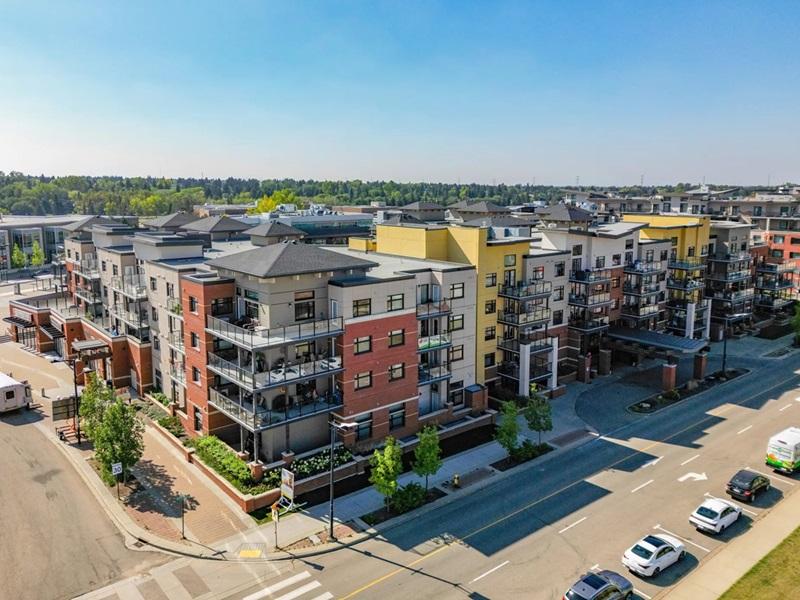Almost every policy begins with good intentions, some of which are genuinely inspiring as they aim to substantially transform our cities. This task is no simple feat.
Much like a well-crafted contract, policies are designed to protect both parties from the worst-case scenario. When planners draft policies, they do so with the intention of preventing the most negative interpretations.
Sometimes, they successfully do it. But there are also cases of overly strict regulations that leave little to no room for interpretation, and affect a broad range of cases rather than just the extreme scenarios we are trying to safeguard against.
Unfortunately, in practice, good intentions carry little weight; it's the outcomes that we must judge. We are still struggling to undo the economic, environmental and cultural harm of exclusionary zoning laws introduced over a century ago.
Decades ago, previous generations of planners decided that building our cities around, and for, cars was the only way to guarantee a modern and prosperous future.
Now, our generation and our children need to pay the price and pour all of our resources into undoing the damage, and perhaps laying a more sustainable and equitable path forward.
The policies that shape our cities
In the face of a housing crisis, and the rapid growth of our cities, we can no longer afford to wait half a century to realize what we are reaping is not what we thought we were sowing.
What our planning system needs right now is radical candour and the provision of more freedom and flexibility for designers and other stakeholders to take action.
Let's examine some regional policies that shape our cities and understand why, despite their good intentions, they result in unintended over-regulated consequences.
Rental replacement
Rental replacement is a policy with an admirable intention to preserve and protect our cities’ stock of affordable rental housing.
It requires every new development that leads to the loss of six or more rental units (even if vacant or illegal), to provide the same number of units at the same rents (with applicable annual increase) for 20 years, and give existing tenants the ‘right to return’ to the same type of unit in the new development, should they choose to do so.
If not, the unit shall remain a rental at the same rent for the same period of time regardless.
In practice, rental replacement projects rarely materialize.
This is because in order to make the math work and make a rental replacement project financially viable, it has to be much larger in scale, with the replacement units making up only a small fraction of the total development.
As a result, we are left with a well-intentioned policy that is virtually impossible to implement.
Building Code requirement for two exits in low- to mid-rise residentials
Ensuring the safety of our buildings is unquestionably a noble intention, and the Building Code's requirement for two means of egress serves that goal well in larger apartment buildings.
However, the over-broad application of this rule, without distinguishing between three- and 30-storey buildings, presents a significant obstacle to creating more "missing-middle" housing as so much space is used as circulation.
Considering the more recent and cost-effective life safety measures suitable for low- to mid-rise buildings, there is no justification for continuing to impose a regulation that greatly affects the creation of more diverse and affordable housing options in the form of low-rise multi-unit structures.
Plenty of effort is being made on this topic, led by our industry peers with alternative safety solutions to replace this requirement.
Inclusionary zoning policy
On paper, inclusionary zoning sounds like a brilliant idea – it asks private developers to include 10 per cent affordable housing in every new development.
But in practice, when developers still have to work within existing constraints like height limits ("shadow impacts"), the cost of that 10 per cent gets passed on to the other 90 per cent of units, driving up market prices and making them even less affordable.
As a result, instead of us sharing the responsibility for affordable housing as a society and a city, we are placing the burden of subsidizing affordable housing on the remaining 90 per cent of buyers and residents, defeating our purpose of making housing more affordable.
Angular planes
Introduced in 2010, angular planes are a prime example of how overly restrictive policies, offering little room for interpretation, can lead to unintended outcomes.
Perhaps even the city planners – who designed these guidelines with the intention of reducing shadows on public realm and private backyards and creating transitions from low-rise neighbouring houses – could not foresee such proliferation of overly stepped mid-rise buildings throughout the city.
Buildings that are more challenging and expensive to build and, more importantly, accommodate fewer residential units.
Fortunately, this policy is now under review and we should commend the city for taking steps in a different direction, because taking a turn from a policy is not easy in our landscape.
Public consultation
The primary goal of urban planning is to serve the public's best interests in how our cities develop. So, what could be more beautiful and well-intentioned than consulting with our communities every step of the way, right?
And it is truly amazing that we managed to make the community consultation an integral part of our planning process.
What's the concern, then?
Well, like any other democratic process that shapes our society for generations, meaningful participation of a diverse range of voices is crucial. Unfortunately, our community consultation process, the way it is currently structured, falls short in this regard.
It not only fails to effectively engage more marginalized groups, but also allows the louder voice of a smaller but more privileged group to disproportionately influence how our cities should (or should not) evolve, often prioritizing their short-term interests over a prosperous future for everyone else.
Development charges
Every new development needs access to essential infrastructure and this comes at a considerable cost. Wouldn't it be ideal if development could pay for itself?
This was the well-intended goal behind introducing the Development Charges Act. But this approach is clearly ineffective, adding fuel to our housing crisis.
High charges render many development projects financially unviable, leading developers to abandon their construction plans.
Furthermore, when these charges are imposed, they are naturally passed on to new homebuyers, again, worsening the problem of housing affordability.
The burden falls disproportionately on those seeking to enter the market, typically newcomers and younger households, looking to purchase condos.
In contrast, established homeowners remain relatively unaffected.
We need a more balanced approach, one that considers shifting a portion of the infrastructure and growth costs to the broader tax base; it is something we should carry as a whole.
Designated zoning
Decades ago, zoning regulations were introduced as a response to the challenges posed by rapid industrialization and urbanization.
At the time, many cities were grappling with overcrowding and pollution due to factories, businesses and residences coexisting in close proximity.
Once again, the intention behind establishing designated land-use zones was a righteous one: to improve public health by promoting cleaner and healthier urban environments.
However, it took us decades, escalating health issues and significant, possibly irreversible environmental damage to realize that our well-intentioned efforts ended up defeating their purpose.
Protecting "character" in neighbourhoods
Unfortunately, many planners, elected officials and community neighbours are still using this phrase. It sounds pure, with the best intentions, but it has sub-text that is questionable.
It is used mostly to oppose new housing, a disguise for what it really is.
Opposing the much-needed housing developments during a housing crisis in the name of preserving the "character" of residential "neighborhoods" is by all means unjustified.
We need to stop using this as an excuse to prioritize the interests of a privileged few over providing dignified housing for the majority who struggle to find a home in our cities.
Moving forward
Planning policies, as abstract as they might seem, can chart the course of how our cities evolve — sometimes for the better and sometimes with unintended adverse consequences despite their best intentions.
What our city planners do to shield us from worst-case scenarios and pave the path to a prosperous future is commendable, and of course, challenging and inevitably prone to mistakes.
There is also the fact that many well-intended policies have successfully served their purpose, contributing to all the amazing things we have in our city, and now they are simply outgrown by our society and need to be adjusted to the new circumstances.
That is why the blueprint for our cities must be both sturdy and flexible — a timeless classic. It should offer a robust framework yet remain open to interpretation, allowing us to adapt and evolve with the ever-changing needs and aspirations of our communities.
It is through a balance of visionary ideals and practical adaptability that we will create cities that stand the test of time and inspire future generations to build upon our good intentions.










